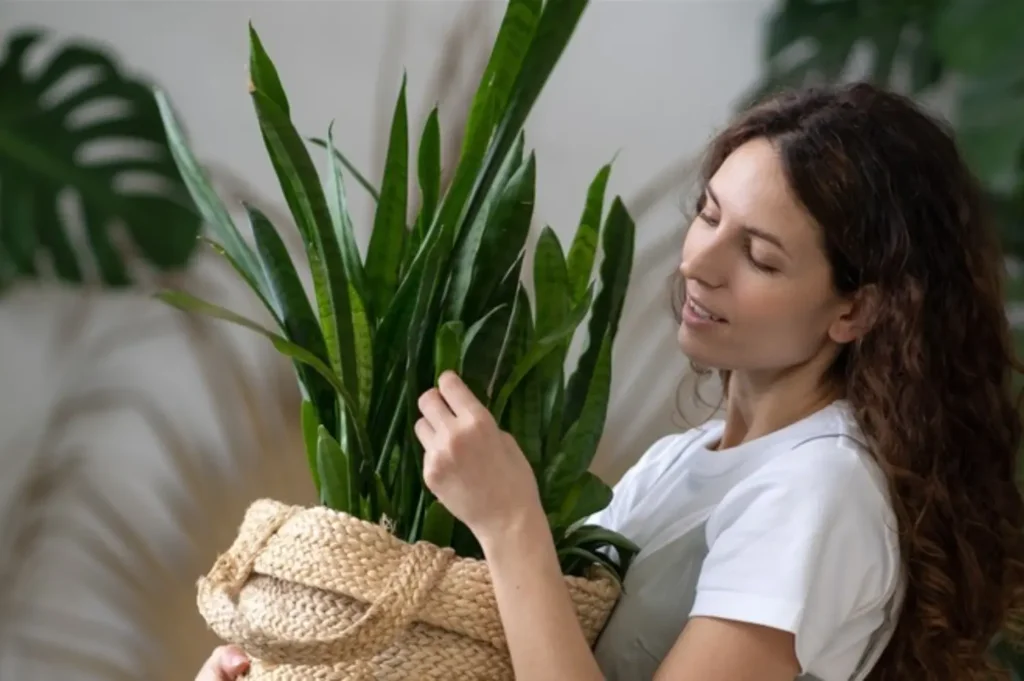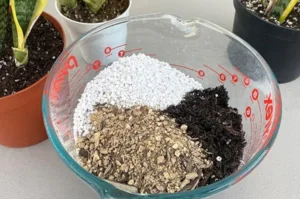Snake plants (Sansevieria), also known as mother-in-law’s tongue, are renowned for their hardy nature, stylish appearance, and air-purifying qualities. But while these plants can tolerate a wide range of environments, placing them in the right location makes a big difference in how well they thrive.
If you’re wondering, “Where is the best place to put a snake plant?” — this guide covers it all. From light, temperature, and humidity to room-by-room recommendations, we’ll break down everything you need to know to give your snake plant the optimal spot in your home or office.
Quick Answer
The best place to put a snake plant is in a room with bright, indirect sunlight, stable indoor temperatures between 65°F and 85°F (18°C to 29°C), and low to moderate humidity, away from cold drafts or direct harsh sun.
Why Location Matters for Snake Plants
Although snake plants are adaptable, location still plays a key role in:
- Growth rate
- Leaf color and pattern
- Resistance to root rot
- Air-purifying efficiency
Putting the plant in a poorly lit or extremely humid spot can lead to slower growth, mushy leaves, or fungal problems.
Best Places to Put a Snake Plant (Room-by-Room)
Let’s dive into some of the best indoor locations based on typical home settings.
1. Living Room
Ideal Spot: Near an east-facing or north-facing window.
Why It Works: Living rooms often have bright, indirect light, which suits snake plants perfectly. If the light is too harsh, sheer curtains can help.
Tip: Avoid placing the plant too close to heating vents or fireplaces.
2. Bedroom
Ideal Spot: Near a window with filtered light, such as on a nightstand or dresser.
Why It Works: Snake plants are one of the best bedroom plants because they convert CO₂ into oxygen at night. This can improve sleep quality.
Tip: Ensure the area isn’t drafty in winter, especially if the window isn’t well-insulated.
3. Bathroom
Ideal Spot: Near a small window or under artificial lighting.
Why It Works: Snake plants can handle higher humidity, making bathrooms a viable option, as long as there’s some light.
Tip: If your bathroom lacks natural light, use a grow light or place it outside the bathroom for a few days weekly.
4. Office or Workspace
Ideal Spot: On a desk near a window or under fluorescent lighting.
Why It Works: Snake plants do well in low-light, low-maintenance environments (perfect for offices). They also help reduce airborne toxins and boost indoor air quality.
Tip: Rotate the plant occasionally to ensure even growth.
5. Kitchen
Ideal Spot: On a counter or shelf with moderate light.
Why It Works: Kitchens tend to have fluctuating humidity and occasional grease, and snake plants are resilient enough to handle both.
Tip: Keep it away from direct heat (like ovens or stoves) and steam-heavy spots like near kettles.
What Type of Light is Best for Snake Plants?
- Bright, indirect light = Best
- Low light = Tolerable, but slow growth
- Direct sunlight = Can scorch the leaves
If natural light is limited, snake plants also thrive under fluorescent or LED grow lights.
Ideal Temperature for Snake Plants
Snake plants prefer moderate room temperatures:
- 65°F to 85°F (18°C to 29°C)
- Avoid temperatures below 50°F (10°C), as they are not frost-tolerant.
Keep them away from drafty doors, air conditioners, or radiators.
What About Humidity?
Snake plants thrive in low to moderate humidity. Bathrooms and kitchens are acceptable if they’re well-ventilated.
Too much moisture can lead to root rot, so always let the soil dry between waterings, especially in more humid spots.
Feng Shui & Vastu: Directional Placement Tips
If you follow Feng Shui or Vastu guidelines, placement direction can enhance positivity:
- Feng Shui: Place the snake plant in the southeast, east, or south corners to attract wealth and protective energy.
- Vastu: The Best directions are north, east, or northeast.
Places to Avoid
Avoid placing your snake plant in:
| Location | Reason |
| Direct sun windowsills | Can burn the leaves |
| Next to heaters or AC vents | Causes dehydration or temperature stress |
| Extremely humid areas without airflow | Encourages mold and root rot |
| Outdoor spots with frost or full sun | Snake plants are tropical and not frost-hardy |
Container & Placement Tips
- Use well-draining pots with drainage holes.
- Elevate the plant slightly if placing it on cold tile floors.
- Rotate it every few weeks to encourage symmetrical growth.
s (USDA zones 9–11). Otherwise, keep them indoors or bring them in during colder months.
Final Thoughts :
While snake plants are known for their durability and low-maintenance nature, strategic placement will make them thrive, not just survive.
Here’s the rule of thumb:
“Bright, indirect light + stable temperature + minimal humidity swings = happy snake plant.”
So, whether you place it in your living room, bedroom, office, or even bathroom, choose a location that mimics this condition.
By respecting your snake plant’s light, temperature, and moisture preferences, you’ll enjoy its bold architectural form and air-purifying benefits for years to come.
Pro Tip: For the healthiest growth, pair good placement with proper watering (when soil is dry) and monthly cleaning of the leaves to allow for better light absorption.






